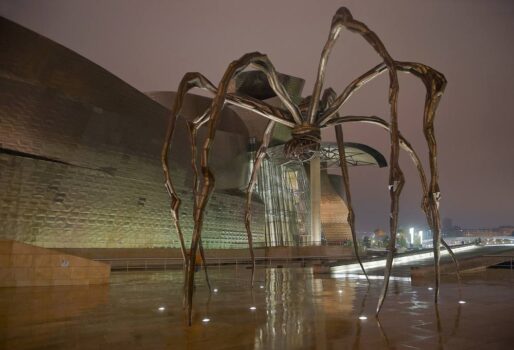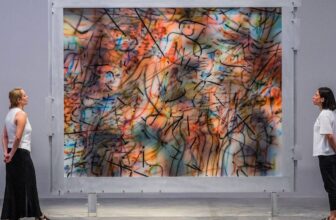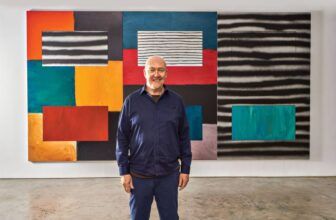What Was Louise Bourgeois Known For
Louise Bourgeois was more than an artist, she was a storyteller, a weaver of memory, a sculptor of emotion, and one of the most influential figures in modern and contemporary art. With a career spanning nearly a century, her legacy stretches across sculpture, installation, drawing, and printmaking, forging a visual language that speaks to the deepest wounds and the most intimate truths of the human experience. In exploring her art, we uncover the raw core of personal trauma, memory, identity, and motherhood, all encapsulated in abstract forms and haunting symbolism.
Louise Bourgeois is best known for her large-scale sculptures and installations that explore themes of childhood trauma, femininity, sexuality, and the unconscious mind. One of her most iconic pieces, Maman (1999), a monumental spider sculpture over 30 feet tall, symbolizes both strength and vulnerability, referencing her own mother who was a weaver and whom Bourgeois saw as both protective and delicate.
Throughout her career, Bourgeois delved deep into autobiographical content, unearthing repressed memories and childhood experiences. This made her work resonate with psychological intensity. She turned her pain, particularly stemming from a complicated relationship with her father and her mother’s illness, into powerful works of art that viewers across generations have found both jarring and cathartic.
She was also a pioneer in using her own psyche as a lens through which to explore universal themes. From her early abstract forms to her visceral latex and fabric sculptures of the 1960s and 1970s, and finally to her haunting Cells installations of the 1990s, Bourgeois never ceased to evolve or confront her fears through art.
How Famous Is Louise Bourgeois?
Though she worked for decades without much public acclaim, Louise Bourgeois gained widespread recognition later in life, especially after a major retrospective at the Museum of Modern Art in New York in 1982, she was the first woman to receive such an honor at MoMA. From that moment on, her influence on the contemporary art world skyrocketed.
By the time of her death in 2010 at the age of 98, Bourgeois had become an icon, not just in the realm of feminist and conceptual art but across all genres of modern visual culture. Her work has been exhibited in leading institutions worldwide, including Tate Modern, Centre Pompidou, the Guggenheim, and the Whitney Museum. Her sculptures are housed in major museum collections, and her towering spiders have become permanent fixtures in public spaces from Tokyo to Bilbao.
Today, she is widely regarded as one of the most important and groundbreaking artists of the 20th century. Her contributions to modern art are studied in academic institutions, and her visual language continues to influence new generations of artists.
How Does Louise Bourgeois Make Her Artwork?
Louise Bourgeois’s creative process was deeply personal, spontaneous, and emotionally driven. She did not adhere to a fixed medium or method; instead, she allowed the themes she wanted to express to dictate the form and material of the artwork.
Her daily practice of drawing and writing, often in diaries, was central to her process. These journals served as the incubators of her ideas, filled with notes, sketches, and stream-of-consciousness reflections. Drawing was both a coping mechanism and a way of mapping her internal world. Many of her sculptural works began as small sketches, which she developed into physical forms using various materials.
Bourgeois often worked in series, returning to the same themes over time. Her Cells series, for example, is a collection of over 60 installations made between 1989 and 2008, which create enclosed spaces representing pain, memory, and psychological states. These works were assemblages of found objects, personal belongings, and crafted sculptures, arranged to evoke domestic spaces haunted by trauma.
Fabric was also a crucial medium for her, especially in her later years. She used her own clothes, linens, and even childhood garments to create soft sculptures, sewn figures, and abstract forms. These tactile works imbued with personal history added a new layer of vulnerability and intimacy to her practice.
Despite the intense personal nature of her work, Bourgeois was not interested in making her art easy to interpret. She wanted viewers to confront their own emotions and projections in the face of her symbolic forms. Her art was an open wound, one she invited others to look into and perhaps find their own reflection.
How Much Does Louise Bourgeois Art Cost?
Louise Bourgeois’s artworks are among the most valuable in the contemporary art market. Her works have been sold at major auction houses like Christie’s and Sotheby’s for millions of dollars. In 2011, a bronze cast of her spider sculpture Spider sold for $10.7 million at a Christie’s auction, setting a record at the time for a work by a woman artist. In 2019, another version of Spider sold for $32 million, again setting a world record.
Smaller sculptures, works on paper, and prints by Bourgeois also command high prices, often ranging from tens of thousands to several hundred thousand dollars, depending on the rarity, scale, and provenance of the piece.
Her market continues to grow as demand for her work among private collectors and public institutions increases. Given her reputation and historical significance, owning a Bourgeois artwork is considered a major acquisition in the art world.
How Many Artworks Does Louise Bourgeois Have?
Louise Bourgeois was incredibly prolific, producing thousands of works over the course of her long career. According to The Easton Foundation, the organization she founded in the 1980s to preserve her legacy, Bourgeois created over 45,000 drawings and prints, hundreds of sculptures, and many installations and paintings.
Her creative output was not confined to one period, she worked continuously into her 90s, driven by an almost compulsive need to externalize her emotional states through art. The diversity of her practice is staggering, encompassing everything from surrealist paintings to modernist wood carvings, from organic bronze sculptures to haunting room-sized installations.
While exact numbers vary depending on how one categorizes her works (drawings vs. prints vs. installations vs. sculptures), it is safe to say that her catalog of artworks spans several thousand significant pieces.
What Art Style Is Louise Bourgeois Associated With?
Louise Bourgeois defied easy categorization. Her art intersects with several movements, Surrealism, Abstract Expressionism, Minimalism, and Feminist Art, but she never fully aligned herself with any of them. Instead, she created her own lexicon of forms, driven by psychological content rather than formal aesthetic principles.
In the early part of her career, her work reflected surrealist and abstract influences. Her Personage sculptures from the 1940s and 1950s, tall totemic wooden figures, suggest surrealist forms merged with emotional anthropomorphism.
During the 1960s and 1970s, her work evolved alongside feminist and conceptual art movements, particularly as she began to explore bodily forms, sexuality, and motherhood in visceral materials like latex, fabric, and wax.
Her Cells and Spider sculptures represent a synthesis of installation art and psychological portraiture, combining architecture, object assemblage, and narrative. These works contributed to the rise of installation art as a major form in contemporary practice.
Though she embraced elements of Surrealism and was contemporaneous with Abstract Expressionism, Bourgeois remained fiercely individualistic, charting a personal and emotional path that carved out a wholly unique aesthetic.
What Materials Does Louise Bourgeois Use?
Louise Bourgeois was a master of materials. She believed that the medium was as important as the message, and she carefully chose materials that resonated with the emotional and symbolic content of her works.
Some of the most common materials she used include:
Bronze: Many of her major sculptures, including Spider, are cast in bronze. It gave her forms a monumental, permanent quality, often contrasting with the fragility of the emotions they conveyed.
Fabric and Textiles: In her later years, Bourgeois turned to fabric sculpture using old clothing, household linens, and tapestries. These soft materials were stitched, sewn, and stuffed to form figures, body parts, or abstract shapes. The fabric pieces evoke memory, femininity, and domesticity.
Wood: Especially in her earlier sculptures, such as the Personages, Bourgeois carved and assembled wood to create tall, totem-like forms. These works were both abstract and deeply personal, resembling figures from her childhood.
Marble and Stone: She also worked with marble and other stones, sculpting them into bodily or organic shapes. The tension between the hard material and the emotional softness of the forms was a frequent motif.
Latex, Wax, and Plaster: These malleable materials were often used in more experimental and intimate pieces. They allowed her to capture texture, vulnerability, and corporeality.
Glass and Steel: In her Cells, Bourgeois used steel cages, mirrors, and glass bottles to create psychological and spatial metaphors. The contrast between transparent and opaque, hard and soft, was always carefully constructed.
Her ability to manipulate materiality to evoke sensation, touch, memory, pain, protection, was unparalleled. Each work became a kind of body: some open and exposed, others armored and hidden.
The Power of Emotional Honesty in Art
Louise Bourgeois transformed her inner world into tangible, physical forms. Her art is not just to be seen but to be felt, sometimes uncomfortably so. She never shied away from complexity, contradiction, or pain. Instead, she sculpted them, sewed them, and enclosed them in steel cages.
Her life and art are inseparable. She believed that art was a form of psychoanalysis, a way to confront the past, to make sense of emotion, to survive. And in doing so, she gave the world a body of work that is haunting, honest, and enduring.
Today, Louise Bourgeois stands as a towering figure in modern art. Her spiders still cast shadows across museum courtyards, her Cells still whisper secrets from behind steel bars, and her fabric sculptures still bleed memory through every stitch. Her art tells us that nothing truly disappears, not memory, not trauma, not love, but through the act of creation, we can transform pain into beauty.




